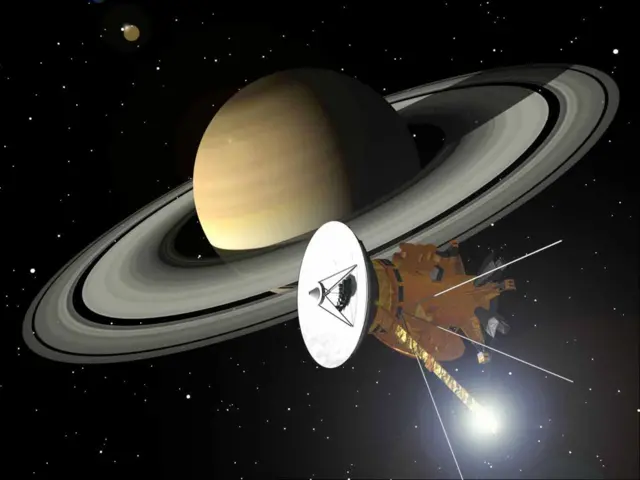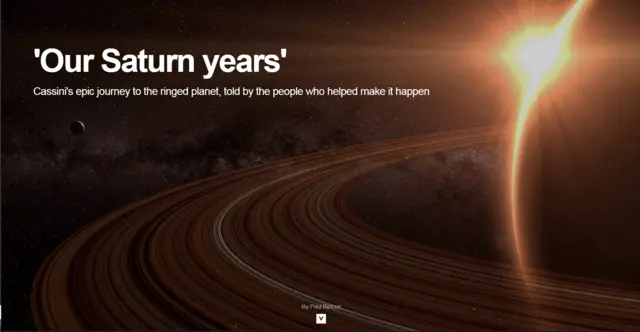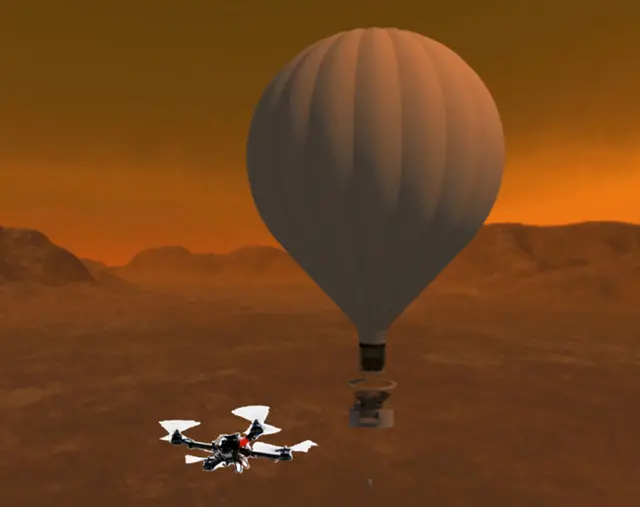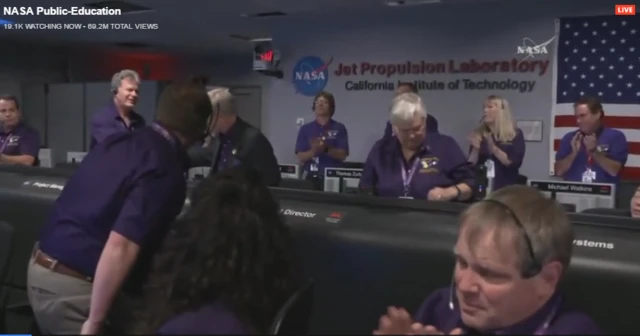An ending and a beginningpublished at 15:58 BST 15 September 2017
It was a sombre event. Cassini has been sending back data from the Saturn system for 13 years now, and for those who’ve followed the mission for so long, the end is hard to take. The Cassini-Huygens mission has left an indelible mark on human knowledge, enriching our understanding of the Solar System.
So as we sign off, we’ll leave it to Cassini’s project scientist Dr Linda Spilker to explain why we shouldn’t be glum: “What's happening is both an ending and a beginning. It's the end of data collection. But it's the beginning of a legacy where the scientists and engineers will go out and become a part of other missions, taking what they've learned from Cassini with them.”
 Image source, Nasa
Image source, Nasa



